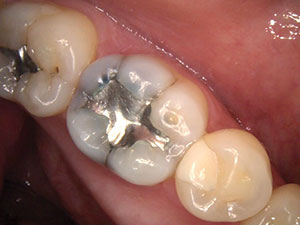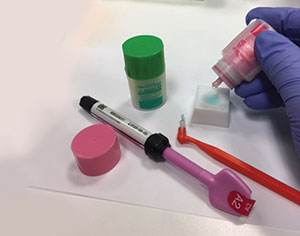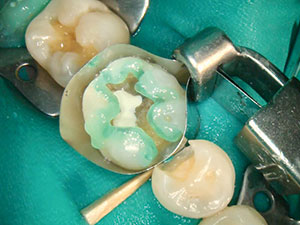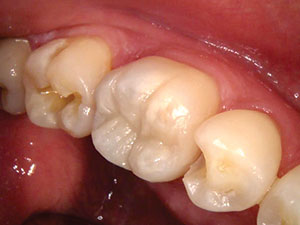
Adhesive dentistry has historically presented dentists with challenges associated with the selection, indication, and application of bonding agents used during their adhesive protocol. Difficulties may present due to a particular adhesive bonding agent’s compatibility or incompatibility with direct or indirect restorative materials, suitability for use with only specific etching techniques (eg, total-etch, self-etch, or selective enamel etch), and/or curing requirements. Additionally, such considerations as bond strength, working time, and adhesive bonding agent film thickness can ultimately influence the predictability of adhesively placed restorations. Fortunately, ongoing advancements in the formulations of adhesives have provided dentists with an enhanced range of uses and applications for these materials.
Tokuyama Universal Bond
Indicated for use with direct anterior and posterior restorations with dual-curing, self-curing, and light-curing composite materials—as well as cementation of indirect restorations (eg, ceramics, zirconia, and metal) and veneers when combined with light-curing, dual-curing, and self-curing resin cements—Universal Bond (Tokuyama Dental America) achieves high adhesion values on enamel and dentin, in addition to prosthetic materials. The adhesive’s innovative 3-D, cross-linking reaction technology (3-D-SR monomer) improves adhesion layer strength.
Clinical Technique
In this case, once the defective restoration and decay were removed and isolation established (Figure 2), a light-cured, resin-modified calcium silicate liner (TheraCal LC [BISCO Dental Products]) was placed as a protective base due to the deep nature of the cavity preparation. This also served as an opaquer to block the stained tooth structure from showing through the direct composite restoration.
 |
 |
| Figure 1. A 29-year-old male presented with a failing occlusal amalgam restoration on tooth No. 19 that resulted in mesial, distal, facial, and lingual fractures and significant caries below the restoration. |
Figure 2. The defective amalgam restoration and all surrounding decay were removed using a round carbide bur in a slow speed-handpiece. |
 |
 |
| Figure 3. One drop each of Universal Bond A and B (Tokuyama Dental America) was dispensed into the same disposable well and mixed. |
Figure 4. The occlusal surface was selectively etched using 35% phosphoric acid. |
 |
 |
| Figure 5. Tokuyama Universal Bond was applied directly to the entire preparation, after which it was lightly dried with a continuous stream of weak air until the solvent was evaporated. |
Figure 6. Postoperative view of the completed MOBL direct composite restoration (Estelite Sigma Quick [Tokuyama Dental America]) on tooth No. 19. |
The facial and lingual enamel surfaces were then selectively etched for 10 seconds using 35% phosphoric acid, after which they were rinsed and dried. One drop each of Tokuyama Universal Bond A and B was dispensed into the same disposable well and mixed (Figure 3), and the bonding agent was then applied directly to the facial and lingual surfaces of the preparation. No agitation or light curing was required; the adhesive was only lightly dried with a continuous stream of weak air until the solvent was evaporated. A flowable composite (Filtek Supreme Ultra [3M]) in shades A3 and A4 was then placed on the facial and lingual surfaces and light cured for 20 seconds each, after which a matrix band was placed.
The occlusal enamel surface was then selectively etched for 10 seconds using 35% phosphoric acid (Figure 4), after which it was rinsed and dried. The bonding agent was applied directly to the entire preparation following the same protocol (Figure 5).
The same flowable composite in shade A2 was placed on the mesial-gingival floor and light cured for 20 seconds. To build up the restoration, increments of a universal, supra-nano filled composite (Estelite Sigma Quick [Tokuyama Dental America]) in shade A2 were placed, preshaped with instruments, and cured. The selected composite demonstrated the requisite nonsticky and nonslumping consistency necessary for effortless sculpting and easy handling. Restoration anatomy was established using burs, after which discs (Sof-Lex [3M]) were used for anatomical contouring. The restoration was then polished (Figure 6).
CONCLUSION
The introduction of universal adhesives has helped to reduce the time-consuming and technique-sensitive nature of adhesive protocols for placing direct and indirect restorations. Because it can be used with all restorative materials and etching techniques, Tokuyama Universal Bond represents a simple and convenient alternative for achieving high bond strengths for a variety of clinical indications.
For more information, call Tokuyama Dental America at (877) 378-3548 or visit tokuyama-us.com.
Dr. Chae has been practicing general and cosmetic dentistry in Diamond Bar, Calif, since graduating from the University of California at San Francisco School of Dentistry in 2000. A member of the American Academy of Cosmetic Dentistry, American Dental Association, and California Dental Association, Dr. Chae can be found on Instagram@diamondbardentalgroup, where he shares his work and answers questions from his more than 25,000 followers worldwide.



